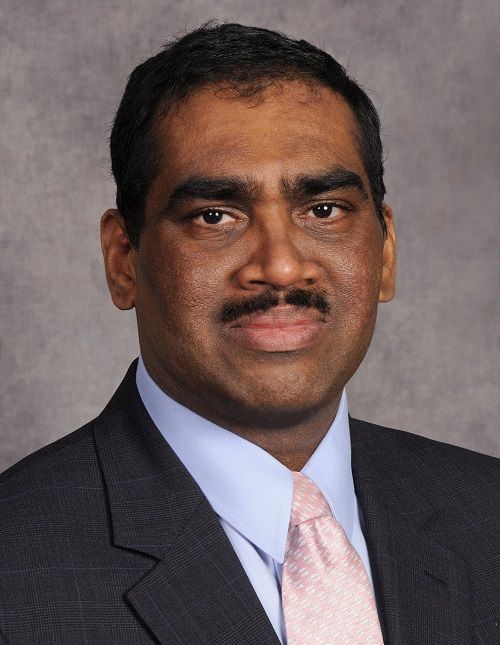Cherian George from Fitch Ratings discusses opportunities in sustainable infrastructure
We spoke to Cherian George, MD, Head of Americas Infrastructure and Project Finance at Fitch Ratings to find out where the opportunities lie in sustainable infrastructure and how technology can help investors make better decisions in these areas.

We spoke to Cherian George, MD, Head of Americas Infrastructure and Project Finance at Fitch Ratings to find out where the opportunities lie in sustainable infrastructure and how technology can help investors make better decisions in these areas.
Where do the opportunities lie in sustainable infrastructure?
The opportunities abound as most, if not all, our infrastructure was built with a 18th, 19th or 20th century mind-set of taking advantage of the resources around us without enough downstream thought of the implications of resource depletion and environmental impact. Our roads use asphalt which is fossil-fuel based, our bridges and power plants use steel which requires considerable fossil-fuelled energy to produce, our ports impact fish and wildlife, our water pipes have lead; they all cause issues of waste disposal; they all impact their neighbours. Yet, we are not getting rid of our infrastructure, so we need to find a way to build, operate and maintain it while minimizing the adverse impact on the environment, society at large and ultimately the underlying economy that we are all dependent on for our livelihoods. The next 50 years will involve rebuilding all aspects of our infrastructure while responding to a 21st century, technology based, more interactive and more inter-dependent globe; all with a focus on sustainability. However, all this will cost taxpayer money which is in limited supply. Also, much of our existing infrastructure is unlikely to be fully replaced if it remains largely fit for the purpose for what it was initially built.
What role can technology play in making our infrastructure investments more sustainable?
Technology will be integral to new investments. Advancements in scientific research and application will seek to create more efficient and sustainable designs using more durable and environmentally conscious materials. Consumer goods (refrigerators, dish washers, washing machines and air conditioners are more energy-efficient and cheaper to run – which has reduced the increase in power usage by individuals in developed markets. Buildings are now being designed and developed to be environmentally friendlier to operate in terms of energy usage for heating or cooling and in terms of capture and reuse of recycled water. Autonomous and connected vehicles will demand a smarter and more reliable roadway and communications infrastructure. Smart sensors and meters in water and power networks will reduce inefficiency and leakage. Advances in storage technology will enable renewable energy generators to replace conventional combustion-based generators. Technology will also enhance the financial viability of infrastructure projects as data will be more robust and reliable over time allowing better differentiation between stronger and weaker assets.
What information is available to investors to help make better informed decisions? How can this be improved?
This is a challenge currently as disclosure in very liquid markets is less than ideal. The current limitations in information flow which are largely driven by issuer decisions to provide the minimum levels to gain market access will more likely change either as issuers with stronger credit quality are incentivized to raise the bar in their own selfish interest or as regulators demand more timely and robust data disclosure. The availability of proxy data may well also incentivize issuers to control the narrative and cause more voluntary disclosure.
What role in Fitch Ratings playing in the sustainable infrastructure investment space?
Fitch Ratings is a leading provider of credit ratings, commentary and research. As an independent ratings agency we evaluate the credit quality of the instruments requested of us. We do not develop those instruments. So, when it comes to sustainable infrastructure or the lack thereof we consider the materiality of those attributes to the ability and willingness to repay debt. For example, a coal plant may need considerable investment to scrub the outputs from the plant to limit environmental damage. We will evaluate the risk of those costs being higher than expected and also the potential costs that society may put on such plants, including policy changes that could shut them down at some point. We can rate it but with these factors accounted for. On the other hand, a sustainable bio-fuels plant with imperceptible environmental impact may be a higher cost plant due to the high cost of newer technology and the still limited scale of market acceptance but will not be subject to these added costs, especially the potential risk of sudden policy change. Those factors will be incorporated into our ratings analysis. The impact in each case will vary and particularly as markets develop and policies change the benefits of sustainable investments will arguably be more and more positive to credit quality while the costs of unsustainable investments will be more and more adverse.
Cherian will be delivering a talk at the Sustainable Investment Forum, taking place during Climate Week NYC on the 26 September 2018. To join him and many others visit www.sinvforum.org






